

Matt Robinson
2026 Skoda Fabia 130 review: Quick drive
18 Hours Ago
Not too big, not too small. The Volkswagen Golf Wagon won't sell in the same numbers as the hatch, but it'll make wagon devotees very happy.
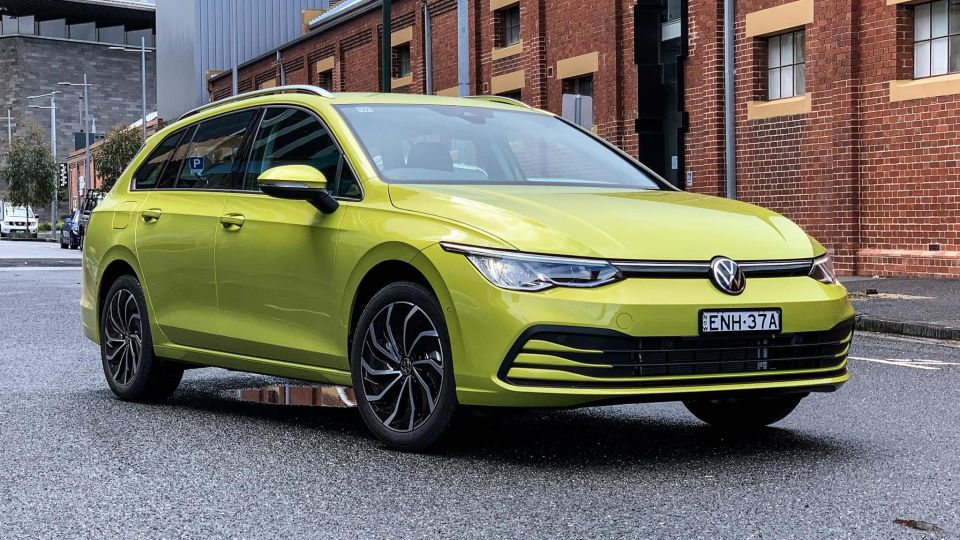
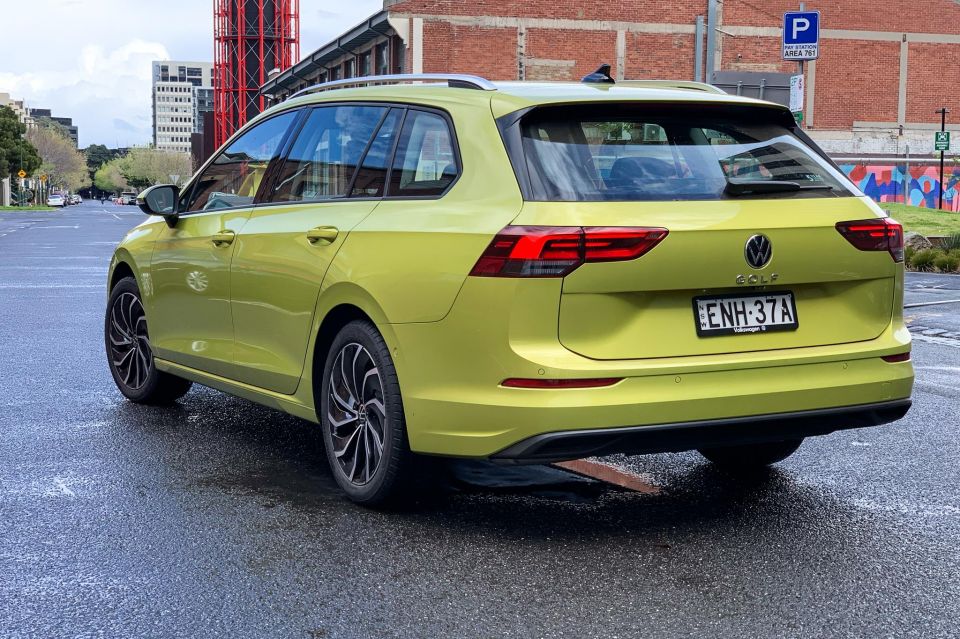

Contributor
New from
$36,250
excl. on-roads

Contributor
New from
$36,250
excl. on-roads


Contributor
New from
$36,250
excl. on-roads

Contributor
New from
$36,250
excl. on-roads
Quickly see how this car stacks up against its competition. Select any benchmark to see more details.
Where expert car reviews meet expert car buying – CarExpert gives you trusted advice, personalised service and real savings on your next new car.
Modern wisdom would suggest the best way to carry a family and all their luggage is with an SUV.
The Mazda CX-5 and Toyota RAV4 dominate the sales charts locally, and the mid-sized Tiguan SUV has usurped the Golf as the best-selling Volkswagen worldwide.
Ford has axed the Focus Estate in Australia, the Astra wagon died with Holden, and the Renault Megane range has been whittled down to include only the R.S. hatchback.

Don’t go giving up on compact wagons just yet, though, because the Volkswagen Group is still flying the flag in Australia.
Skoda is known for its wagons, and Volkswagen has committed to offering at least three Golf Wagon variants in Australia – two regular models, and the Golf R due in 2022.
On paper, the mid-range Golf Wagon 110TSI Life sits right in the Goldilocks zone with a compact body, spacious cabin, and a price just $2000 higher than the hatchback.
In reality, that’s exactly how it plays out.
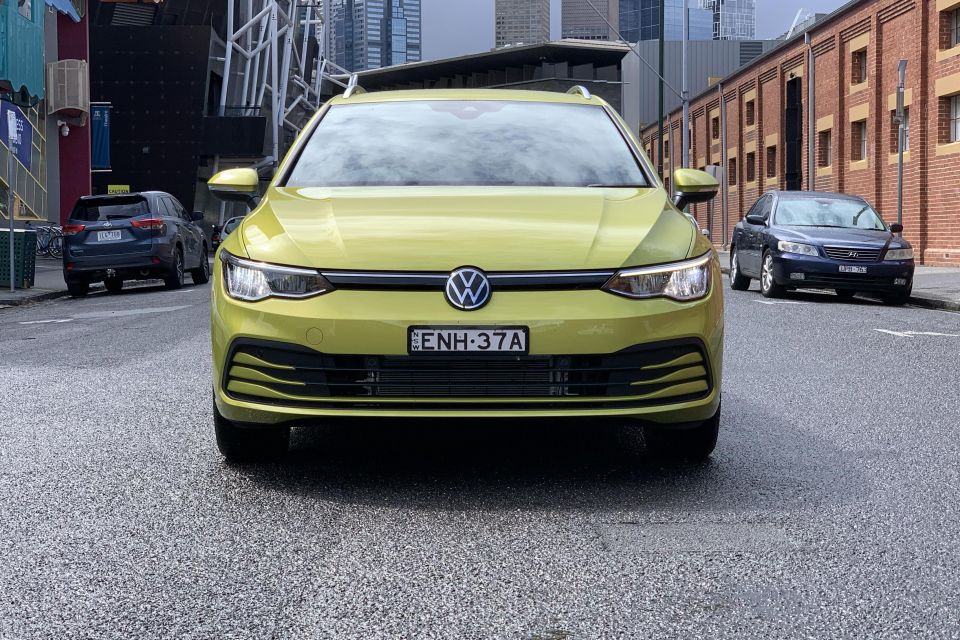
The 2022 Volkswagen Golf Wagon 110TSI Life is priced from $36,250 before on-road costs, making it $2000 more expensive than the equivalent hatchback.
You can get behind the wheel of a Golf Wagon for $33,550 before on-road costs if you’re willing to forego some equipment. Unlike the five-model hatchback range, there are just two wagon options on offer in Australia until the Golf R Wagon touches down in 2022.
The only direct wagon competition for the Golf comes from Skoda, in the form of the Octavia Ambition ($35,990 drive-away) and Octavia Style ($38,490 drive-away) wagons.
Both share their 1.4-litre four-cylinder turbo engine and eight-speed auto transmission with the Golf, although the Skoda gets more equipment than the equivalent Volkswagen in most areas.
Ford has culled the Focus wagon, the Holden Astra wagon is dead, and the Renault Megane wagon has been sent to the big carpark in the sky, so your options are limited if you want a small wagon.
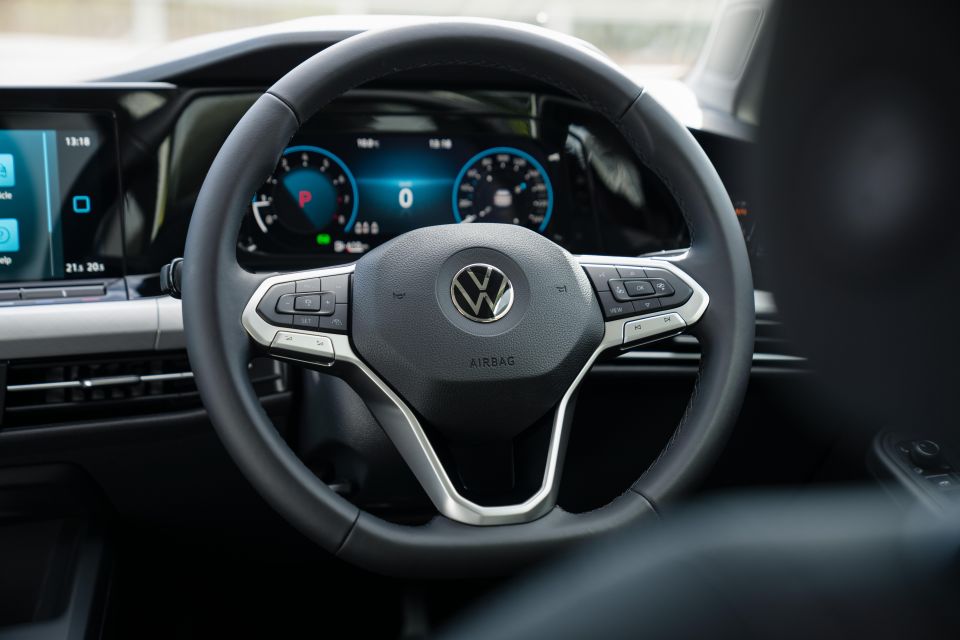
Buy your new car without the stress. It's fast, simple and completely free.

Great service from Travis and team, second time I have used this business would not hesitate to recommend them to anyone
Craig C.
Purchased a Ford Ranger in Sunshine Coast, QLD
CarExpert helped Craig save thousands on his Ford Ranger, now let us save you on your next new car.
Find a dealStandard equipment in the Volkswagen Golf Wagon includes:
Moving to the Volkswagen Golf Wagon Life brings:
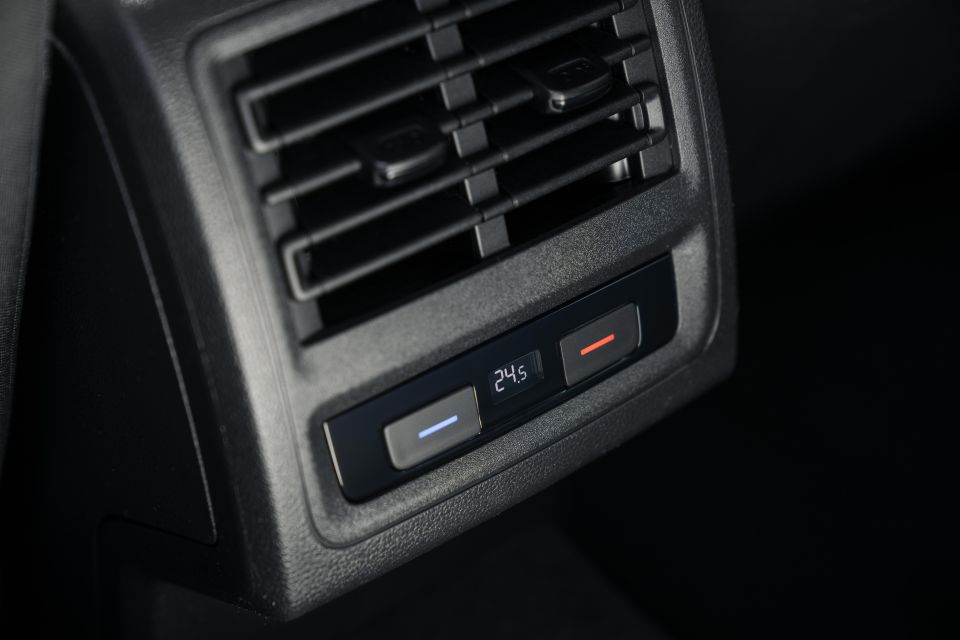
Metallic paint is a $600 option, while premium metallic paint is a $900 option. A trio of options is available for the Golf Wagon Life.
The Sound and Vision Package ($1500) brings:
The Comfort and Style Package ($2000) brings:

The Volkswagen Golf line-up has a five-star ANCAP rating based on testing carried out by Euro NCAP in 2019.
It scored 95 per cent for adult occupant protection, 89 per cent for child occupant protection, 76 per cent for vulnerable road user protection, and 80 per cent for safety assist.
Standard safety equipment in Australia includes:
Opting for the Life brings Emergency Assist and Volkswagen’s exit warning system. All models feature eight airbags as standard too.
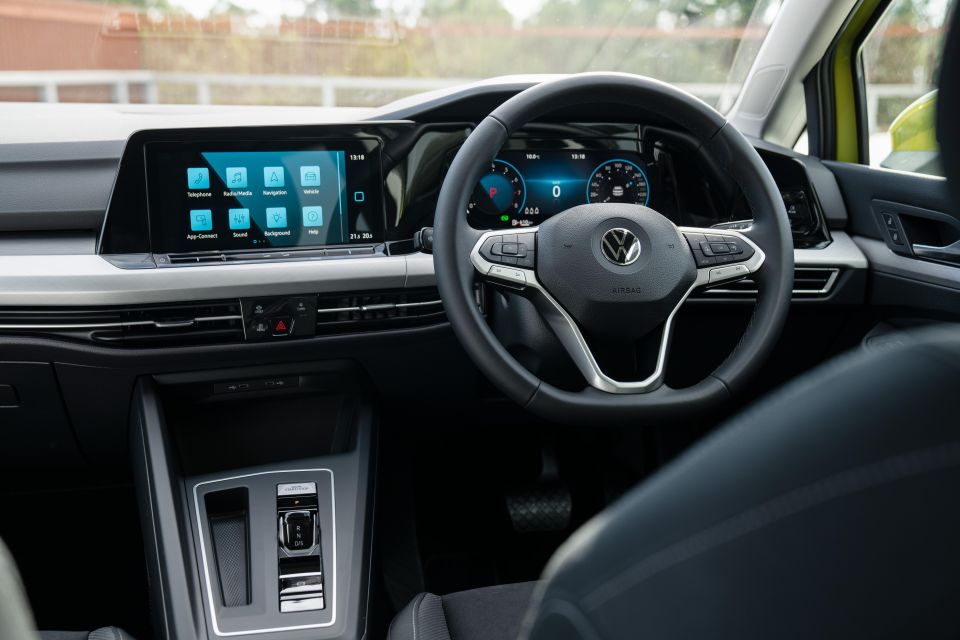
It’s not short on wow factor.
Volkswagen has committed to touchscreens and gloss black capacitive controls in place of the buttons and dials that have gradually evolved over three generations of Golf.
Unlike the entry-level car and its 8.0-inch central display, the mid-range Golf Life gets two 10.25-inch displays atop its dashboard. It almost looks like a concept car, especially if you’ve just hopped out of its predecessor.
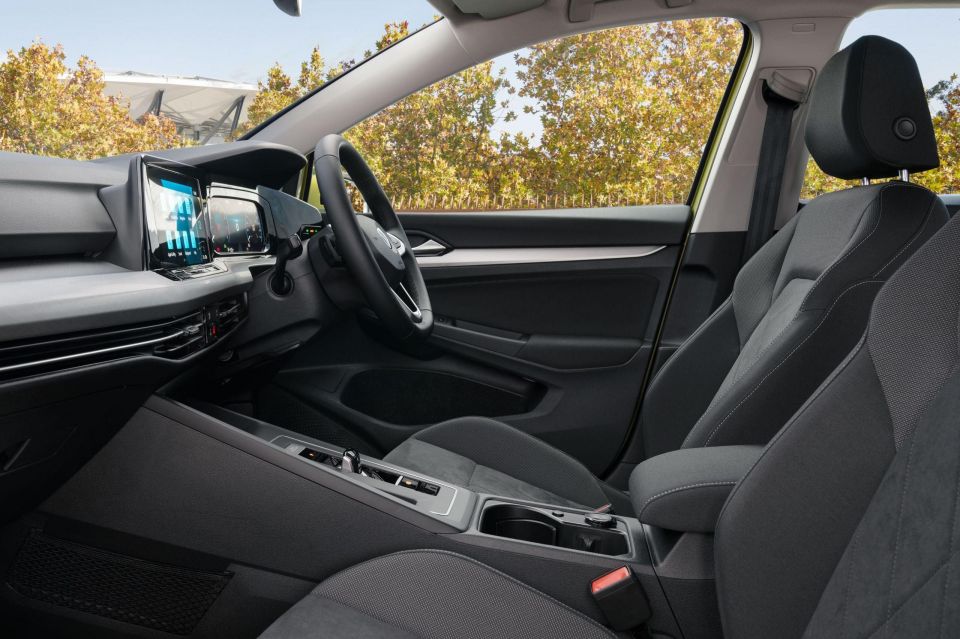
Plenty of the things that were good about the previous Golf remain. The driving position is excellent in the Life, thanks to comfortable cloth-trimmed seats that drop right down to the floor, and the leather-wrapped steering wheel is a quality item.
You still get plenty of soft-touch plastic trim, the stubby gear selector slots into place with a satisfying click, and the indicator stalk is beautifully damped. It’s all classic Volkswagen.
There are some signs of cost-cutting though. The cup holders aren’t hidden under a sliding lid anymore, and the fold-down cubby for garage keys or coins near the driver’s right knee his gone.
They’re small things, but they’re the small things that have always elevated the Golf above its competitors. In some ways, Volkswagen is a victim of its own high standards.
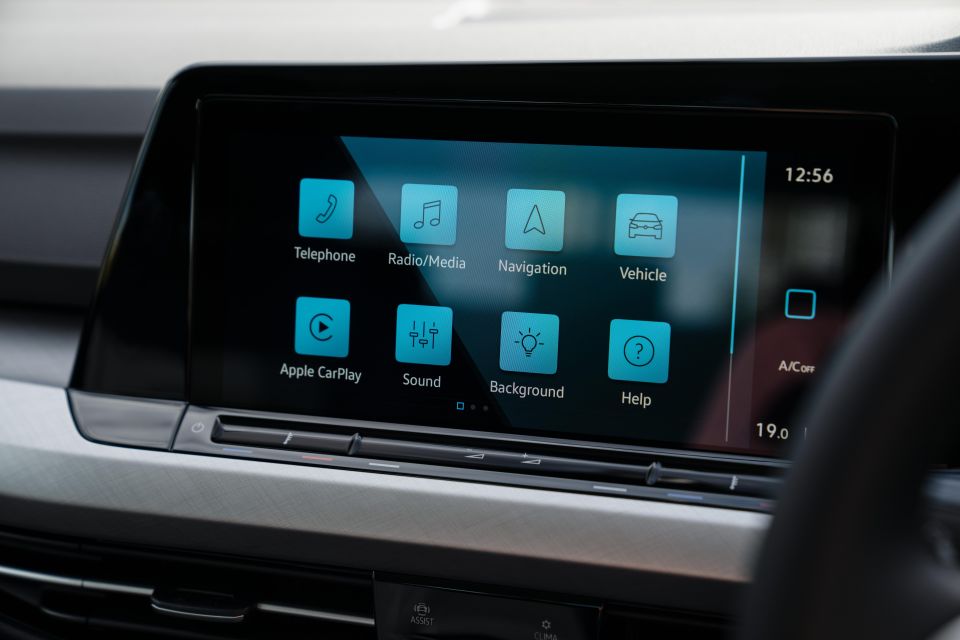

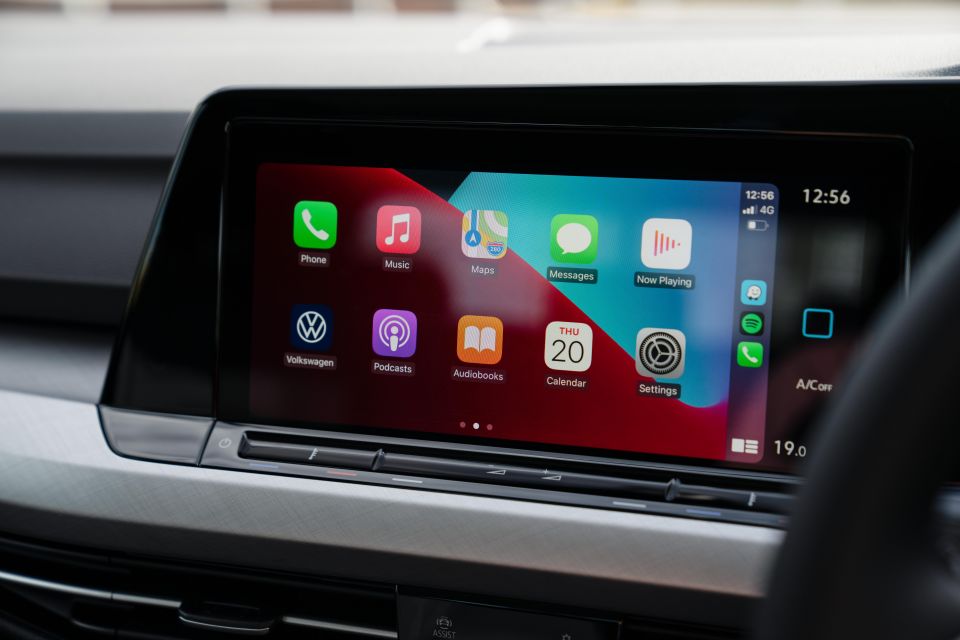

The screen in front of the driver is excellent, which is exactly what we’ve come to expect from Volkswagen Group products. The graphics are crisp, and it shows just the right amount of information.
It’s annoying you can’t change the colour of the display from what’s a pretty uninspiring shade of aqua unless you option the Comfort and Style Pack, though.
The central touchscreen is similarly sharp, but it’s being asked to do too much. If you want to change the fan speed, for example, you need to press a button on the dash and then fiddle with the touchscreen.
That means you lose your media display, and have to spend more time with your eyes off the road compared to how things worked in the old Golf with its physical dials.
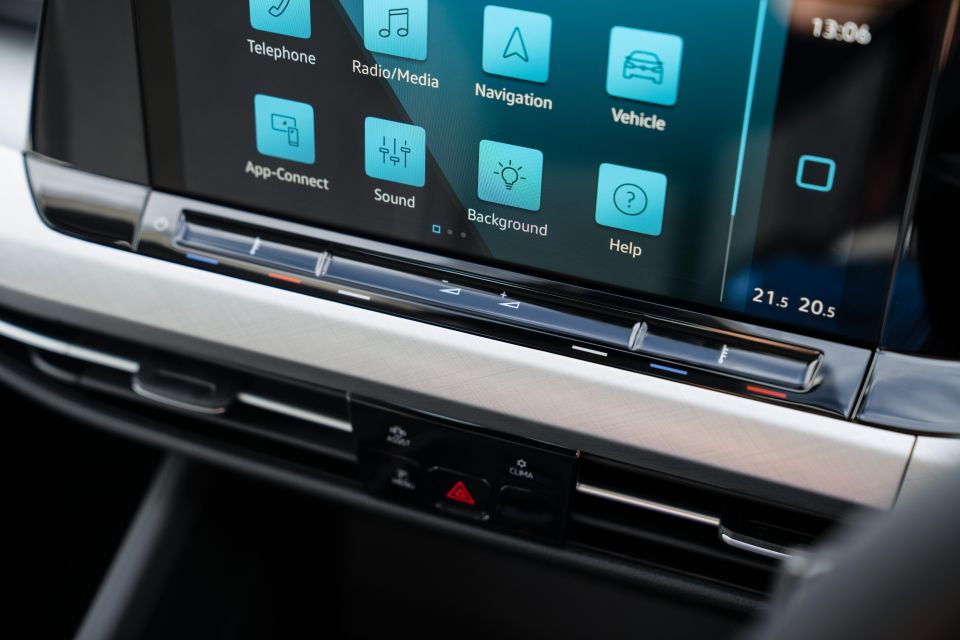

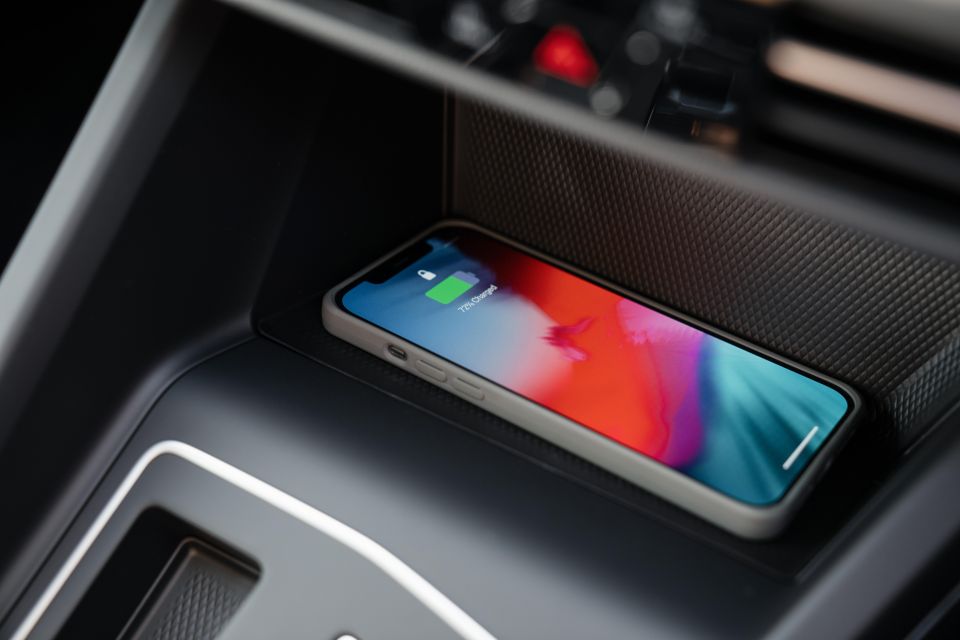
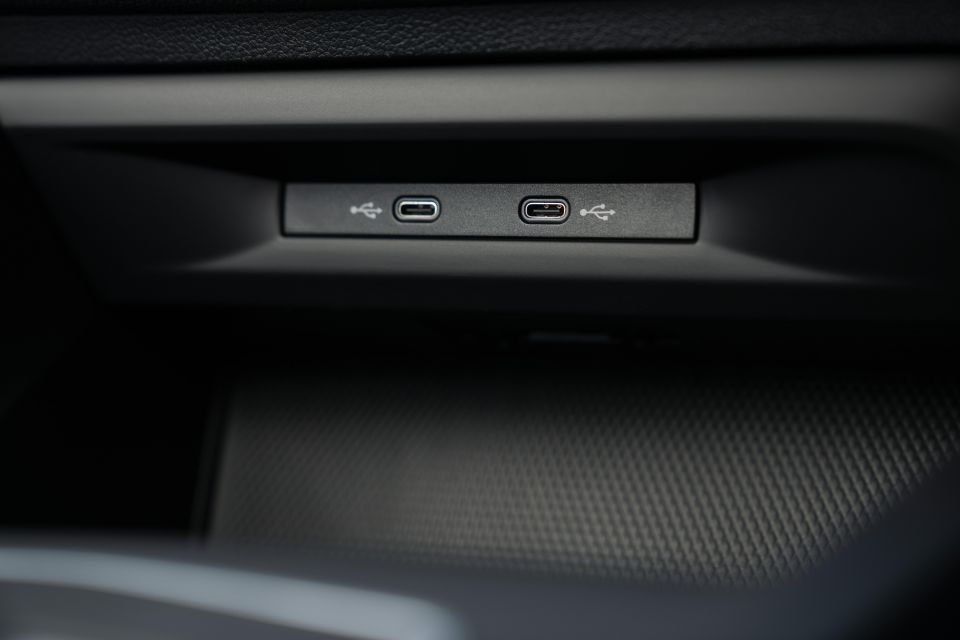
Familiarity helps, but there’s no getting around the fact things that used to be easy are now harder. That’s not good enough in what’s meant to be an evolved take on the Golf.
On the plus side, wireless Apple CarPlay works flawlessly, and the infotainment system itself feels thoroughly modern. Why not fit DAB though, Volkswagen?
Rear seat space is generous for what’s still a reasonably compact wagon, with space for adults or tall teenagers.
Rear passengers get their own temperature controls and air vents, along with a USB-C charge point and a fold-down central armrest.
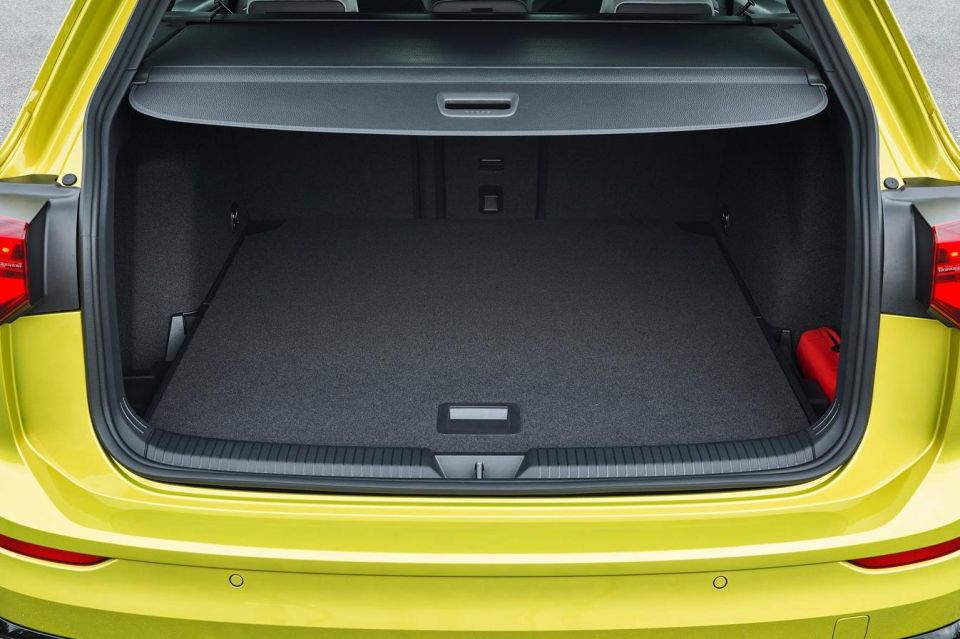
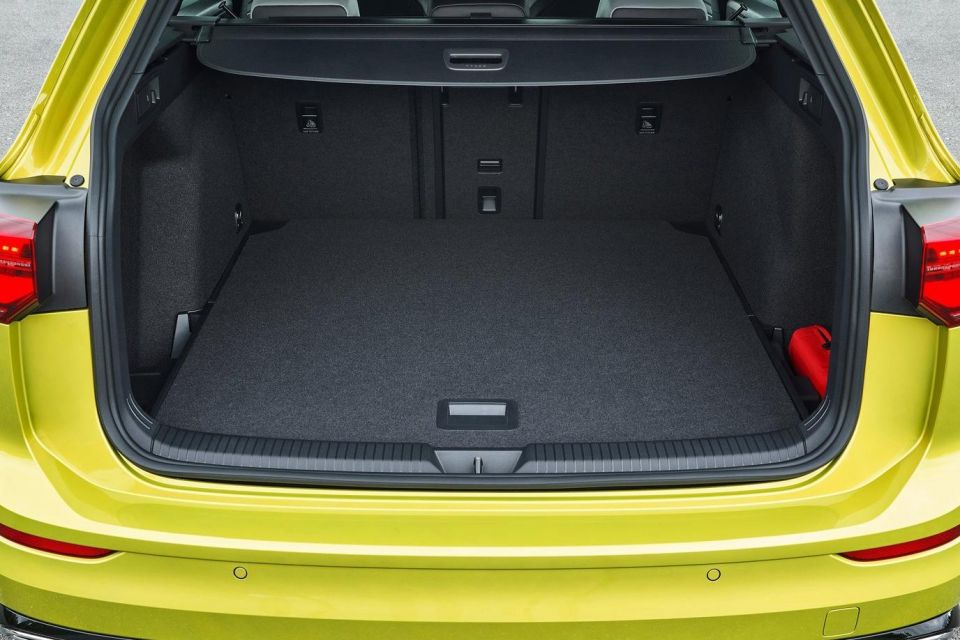
There are top-tether points for all three rear seats, and ISOFIX points on the two outboard seats.
Where the Golf Wagon really flexes its muscle is in the boot, which is downright huge. Where the hatch has 374L of space, the Wagon has 611L with the rear seats in place, and 1642L with them folded.
It’s a long, wide space and features remote handles to fold the second row flat, luggage hooks, and a 12V outlet. Short owners will be happy to know there’s a powered tailgate.
There’s also a sliding luggage cover that requires no swearing or sweating to operate – just press down and it slides smoothly to halfway, then all the way to the back of the load bay. It even has an integrated net to stop big objects sliding into the cabin when you’re loaded above the seatbacks. Clever.
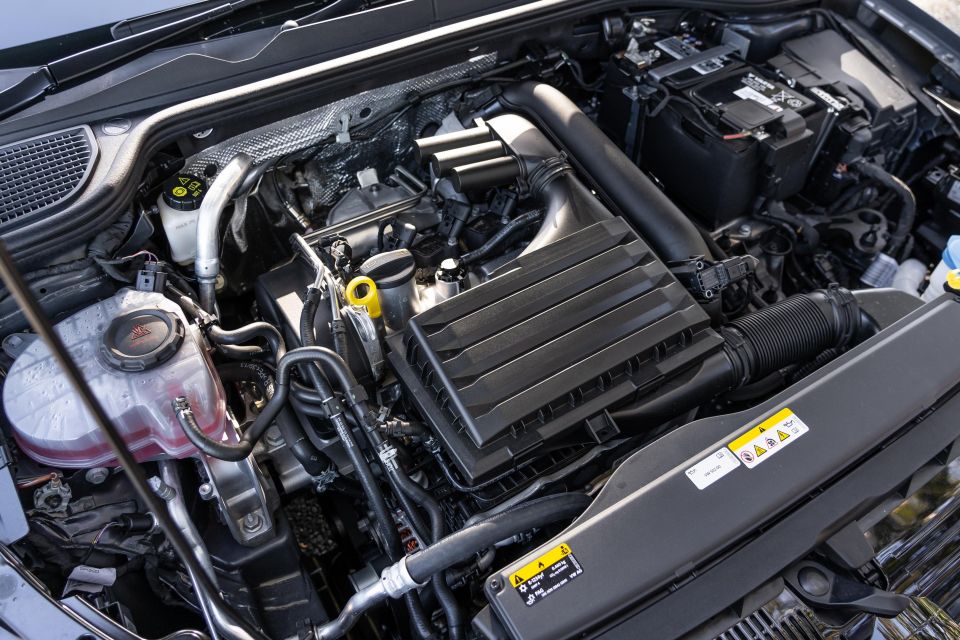
The Golf Wagon is powered by a 1.4-litreturbocharged four-cylinder petrol engine in Australia, making 110kW of power and 250Nm of torque.
It’s front-wheel drive and has an eight-speed torque converter automatic transmission as standard. No manual is offered, unlike in the hatchback.
It uses a claimed 5.9L/100km on the combined cycle, and drinks 95 RON premium unleaded fuel.

Smooth, quiet, and refined, the Wagon Life drives exactly how you’d expect.
For all the changes inside and out, the 2022 Golf uses the same 1.4-litre engine as its predecessor, producing identical outputs.
You won’t confuse it for a GTI, but the Golf is able to get a pretty impressive move on.
It pulls smoothy and strongly from low down, so you don’t need to work hard to get a move-on, and the eight-speed transmission does a good job keeping it in its (broad) sweet spot.

Where expert car reviews meet expert car buying – CarExpert gives you trusted advice, personalised service and real savings on your next new car.
Speaking of the transmission, the dual-clutch of the last Golf has been subbed out for a more conventional torque converter auto. That means the new model uses a bit more fuel, and doesn’t have the same snappy feeling as its predecessor.
Most buyers won’t notice, though. Instead, they’ll appreciate the fact it’s smoother off the mark, without the slight feeling of hesitation you get from even the best dual-clutch transmissions.
There’s no learning curve here, the Golf feels entirely conventional.
Although you still get paddle shifters and a sport mode for the transmission, using them doesn’t turn the Golf into a sports car. It’s best to let the eight-speed auto shuffle unobtrusively from gear-to-gear.

The Golf has always felt tied-down and solid, and the eighth-generation car does nothing to ruin its reputation.
The ride is comfortable over rough roads, but the body never feels floaty or loose. It’s solid, with a premium Germanic feel its rivals have always struggled to match.
With reasonably light steering, good all-round visibility, and a full suite of active driver aids, the Golf Wagon doesn’t feel much tougher to pilot in the city than its shorter hatchback sibling.
Unless you catch a glimpse of your reflection in a shop window – hard to miss in our tester’s shade of radioactive turmeric – it’s easy to forget you’re driving a car with more boot space than a BMW X5.
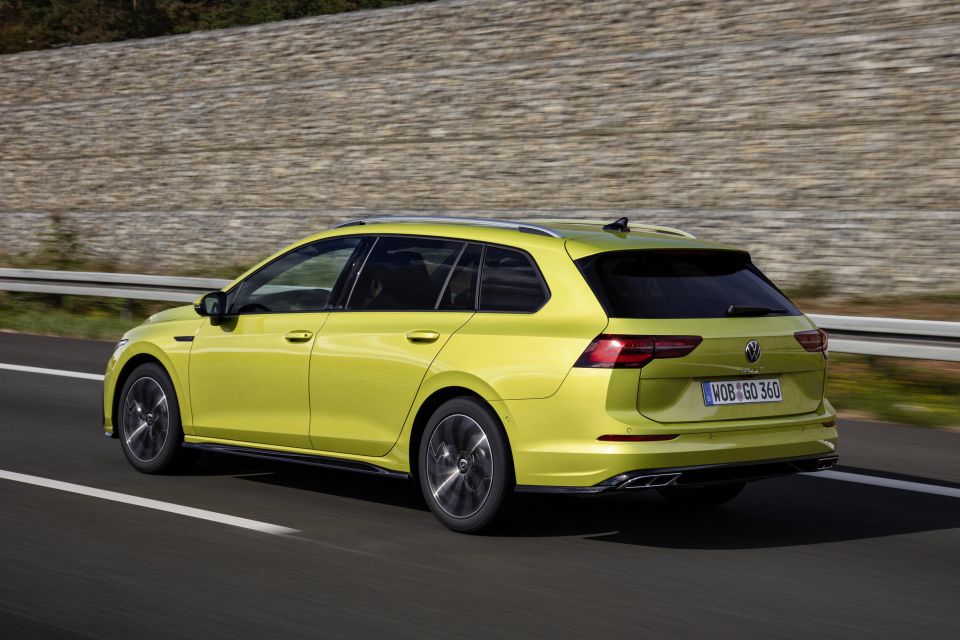
That’s always been the appeal of a good wagon, hasn’t it?
Volkswagen has made a big deal of the fact all Golf models come with its IQ.Drive suite of active driver assists, including adaptive cruise, lane-keep assist, and active lane-centring for the highway.
The systems are super smooth, with a light touch until they’re really needed, but the fact the adaptive cruise refuses to undertake unless you prod the accelerator can grate.
In Europe, where lane discipline is drummed into drivers from day one, that’s a good thing. In Australia, where it’s common for drivers to sit in the right lane doing 10km/h below the limit, it’s annoying.
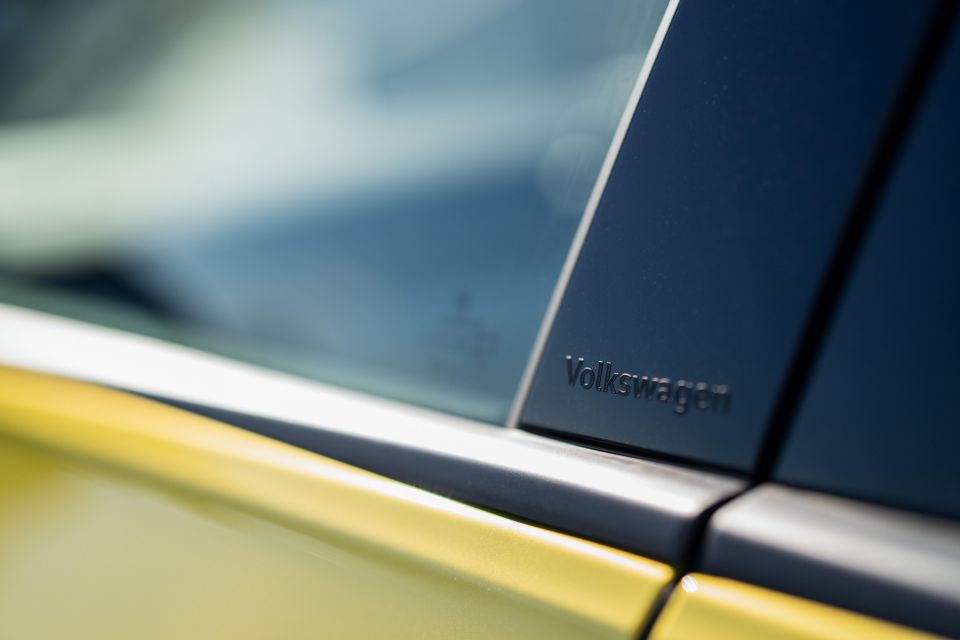
The 2022 Volkswagen Golf line-up is backed by a five-year, unlimited-kilometre warranty.
Roadside assistance is included for 12 months with the initial purchase, and renewed for 12 months with each annual service at your Volkswagen dealer for up to 10 years after the original new car warranty start date.
Maintenance is required every 12 months or 15,000km and Volkswagen offers three- and five-year prepaid service packages for $1100 or $1900 respectively.
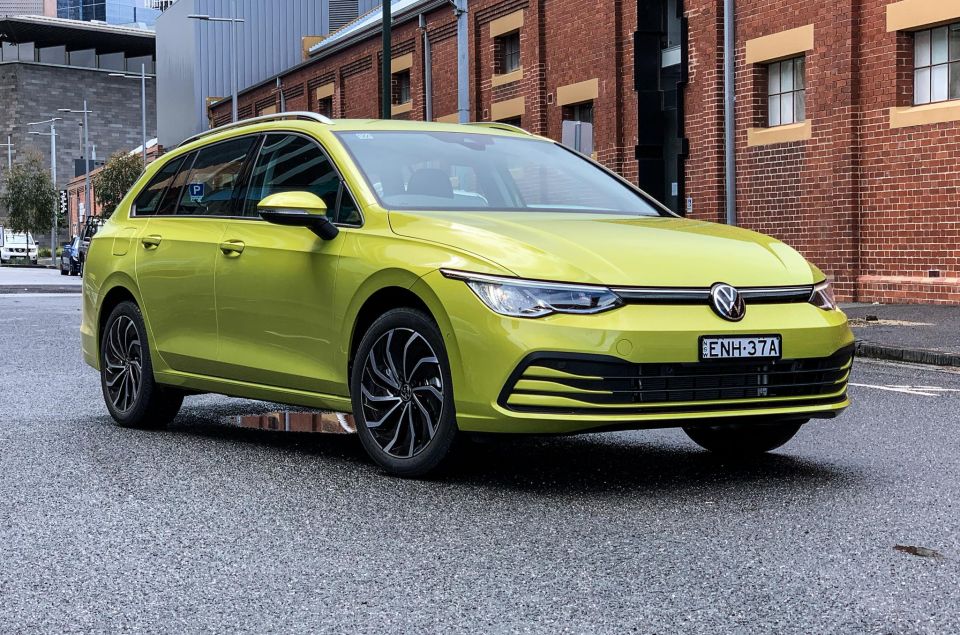
Want a compact wagon? It’s hard to go past the Golf Life.
The best thing we can say about it is that it just feels like a Golf, but with a much bigger boot. It drives with the same polish as the hatchback, which is high praise.
Although the base Golf Wagon is every bit as practical as the Life on test here, the more expensive model has enough extra kit to justify its steeper sticker price.
It’s not quite perfect. For one, the Wagon suffers the same flaws as the eighth-generation Golf hatch.
The slick-looking interior is less user-friendly than before, and some of the high-quality touches that’ve made previous Golf generations feel premium have been sacrificed.
There’s also some stiff competition from within, given the Skoda Octavia offers an equally polished drive and longer standard equipment list for less money.
Neither flaw is fatal, though. In an SUV-obsessed world, the Golf Wagon proves there’s still space for the humble station wagon.
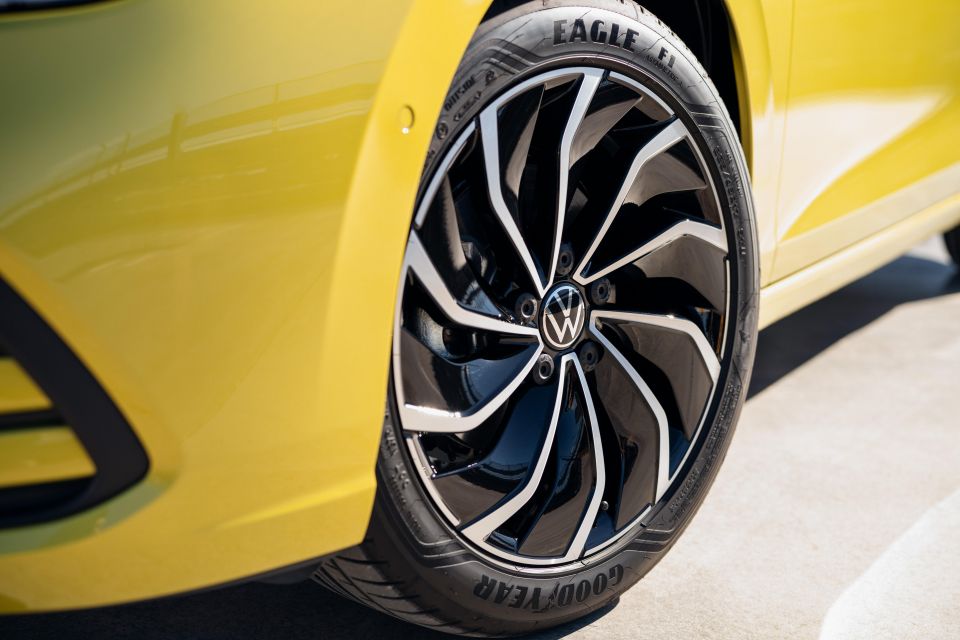
Where expert car reviews meet expert car buying – CarExpert gives you trusted advice, personalised service and real savings on your next new car.
Scott Collie is an automotive journalist based in Melbourne, Australia. Scott studied journalism at RMIT University and, after a lifelong obsession with everything automotive, started covering the car industry shortly afterwards. He has a passion for travel, and is an avid Melbourne Demons supporter.


Matt Robinson
18 Hours Ago


William Stopford
2 Days Ago


William Stopford
3 Days Ago


Damion Smy
7 Days Ago
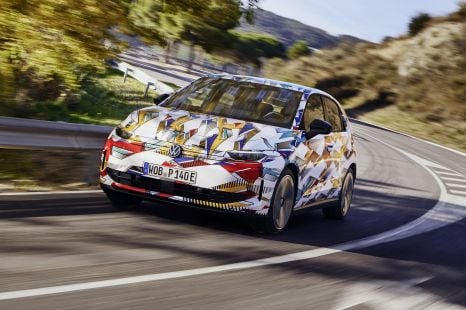

William Stopford
14 Days Ago
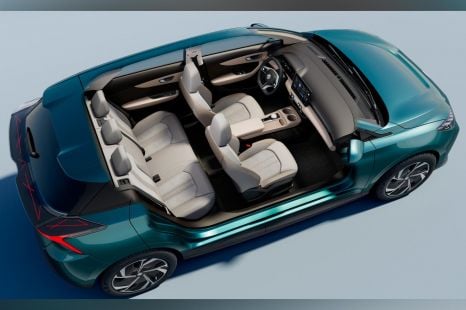

William Stopford
15 Days Ago